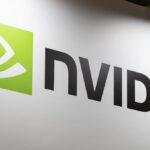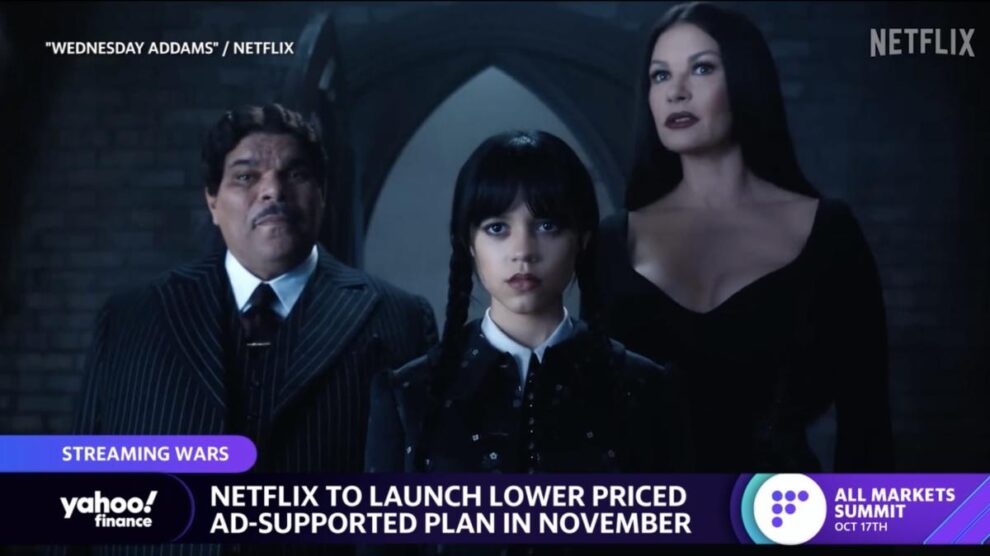Yahoo Finance’s Allie Canal joins the Live show to discuss reports that Netflix will launch its ad-supported tier plan in November.
Video Transcript
SEANA SMITH: Netflix finally revealing the price of its ad-supported tier. Yahoo Finance’s Alexandra Canal here with the details. Allie, what can you tell us? A lot of the focus here on the price.
ALEXANDRA CANAL: A lot of focus on the pricing– $6.99 in the US. That pricing is going to change depending on the country. It will roll out in 12 different countries. The bulk of them will be rolling out on November 3, except Canada and Mexico, November 1. Users can sign up for this. And then Spain, November 10, concludes that rollout.
Now, in terms of that $6.99 price tag in the US, Netflix told me on an earnings– not an earnings call, but a call prior to the announcement, that they are not heavily anchoring the pricing based on competition, especially considering that Disney, with ads, costs $7.99.
So perhaps a little bit more strategy there, but rather, they said they want to provide that entertainment value. The company also shrugged off concerns when it comes to users potentially trading down to the ad-supported tier. They estimated that total revenue will be neutral to positive with the comparable plan.
And then in terms of these ads, how they’re going to impact the user experience, four to five minutes of ads per hour with tight frequency caps, so basically, they don’t want users to see the same ads over and over again. Each ad will be 15 seconds or 30 seconds in length. It’ll either be pre-roll, or it will air in the middle of programming, which I probably am not going to be too keen about it. But I am a user of this ad tier. But I did get a chance to preview some of these. And it looks like the ones that are mid-roll are those on the shorter side, about 15 seconds.
DAVE BRIGGS: It should be interesting to see the ad market when this rolls out. They also say Nielsen data will be part of the next wave. Help or hurt the overall picture for Netflix?
ALEXANDRA CANAL: I think it definitely helps. Historically, Netflix has been a little bit coy when it comes to viewership. That started to change once they began releasing their weekly top 10 list. So this is going to help advertisers really get a sense of the scale for some of these shows and how they can best program their ads within it. We saw Amazon recently partner with Nielsen for more clarity on Thursday Night Football.
So this is something that, I think, is going to be a net positive for Netflix. And I’m sure, as soon as this rolls out, investors, analysts alike, they’re going to be closely watching this one, especially considering Nielsen is the main ratings tracker for a lot of those big cable and broadcast television networks. So we’re sort of entering this era where broadcast and streaming are starting to converge.
SEANA SMITH: Yeah, and Allie, I mean, it’s no surprise. We know that Wall Street, I guess, more broadly speaking, has been very bullish on the ad-supported tier, potentially what that could do in terms of subscriber growth going forward. But Rachelle, it’s interesting. That $6.99 price tag was a little surprising. I was expecting it to be a little bit cheaper, given the fact that their base plan is at $9.99.
RACHELLE AKUFFO: I mean, I agree. I think they maybe didn’t want to put people off too much. They didn’t want there to be such a big price difference. I actually thought it was a pretty good price myself. I’m still not willing to downgrade because I just don’t like my things being interrupted. My time is precious.
I did think it was interesting, though, on the advertising side, though, they sold it on a fixed price basis first. And they said that they nearly sold out all their inventory at launch. So at a time when we’re seeing a lot of advertisers and marketers pulling back, this they seem to be all in on. Obviously, you have a big target right there. I thought that was interesting. And Dave, what do you think? Are you willing to, perhaps, downgrade? Would you pay a little bit less to get the interruptions?
DAVE BRIGGS: Right, and that’s really the big question. How does it change consumer behavior, right? And so we had a poll about what people would do with this $7 a month for the ad tier, how would it change your Netflix subscription. There’s good news and there’s bad news in here. The majority of you said you will not change. So that’s the good news.
I think the bad news is that only encourages 9% of you to join Netflix if you’re not already. That is probably not the number that they are hoping for. Now this is a small sample size. For me, I’m in that majority. Yeah, I won’t make any change based on a $7 per month price tag.
My question is, if this doesn’t work, what’s next? What’s the OK, then? Because they’re not in sports, they’re not in news. They said they’re not going near it. They’re not in merch. They’re not in– they don’t have parks. They don’t have what Amazon or Disney or any of their competitors have. What next?
ALEXANDRA CANAL: Yeah, and I think that’s a really big question that a lot of people are asking themselves. I think right now, in terms of content, they should be focusing on buildable franchise content. They spend a lot of money on these one-off movies that people could just watch and then give up. But what about the multi-series? What about– if you look at something like a “Game of Thrones,” and now they have the prequel, “House of the Dragon.” They’re starting to dabble in that a little bit, but I think they need more of that on the content side.
And another thing I want to note just on the ad tier, another negative is that there’s going to be a limited number of movies and TV shows that will not be available on the ad-supported due to licensing agreements. They said it’s a very small number.
DAVE BRIGGS: We don’t know what.
ALEXANDRA CANAL: We don’t know what. They said between 5% to 10% of overall programming, depending on the country. But that is a lot. And also, you can’t download these shows on the ad tier because of technical complexities.
DAVE BRIGGS: That is no–
SEANA SMITH: That is critical.
DAVE BRIGGS: –small detail.
ALEXANDRA CANAL: And if you’re going on a plane, like, the amount of Netflix that I download–
DAVE BRIGGS: That may be the sole reason we have it. That is no small [INAUDIBLE].
SEANA SMITH: You know what? I was all in for downgrading for the ad-supported tier until–
DAVE BRIGGS: Until now.
SEANA SMITH: –that. I mean, I don’t use it that often, but when you go to use it and not being able to have that, that, of course–
ALEXANDRA CANAL: Oh, it’s a game changer.
DAVE BRIGGS: That is not fine print.
SEANA SMITH: That is–
ALEXANDRA CANAL: I know.
SEANA SMITH: Yeah, that is not fine print. But it is going to be interesting to see, I guess, how many new subscribers they are able to get on board here. What you said just in terms of the amount of time for the ads, it was only a 30-second or 15-second mid-roll?
ALEXANDRA CANAL: 4 to 5 minutes in an hour. 15, 30-second ad, yeah.
SEANA SMITH: That’s not that bad.
ALEXANDRA CANAL: It’s not terrible, but yeah, I am curious how many people will sign up.
SEANA SMITH: Well, we will see soon enough. All right, Allie Canal, thanks so much.






